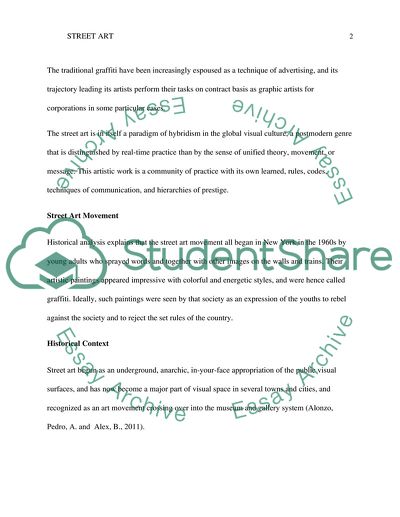Cite this document
(“Street art Research Paper Example | Topics and Well Written Essays - 1500 words - 2”, n.d.)
Retrieved from https://studentshare.org/visual-arts-film-studies/1478033-street-art
Retrieved from https://studentshare.org/visual-arts-film-studies/1478033-street-art
(Street Art Research Paper Example | Topics and Well Written Essays - 1500 Words - 2)
https://studentshare.org/visual-arts-film-studies/1478033-street-art.
https://studentshare.org/visual-arts-film-studies/1478033-street-art.
“Street Art Research Paper Example | Topics and Well Written Essays - 1500 Words - 2”, n.d. https://studentshare.org/visual-arts-film-studies/1478033-street-art.


